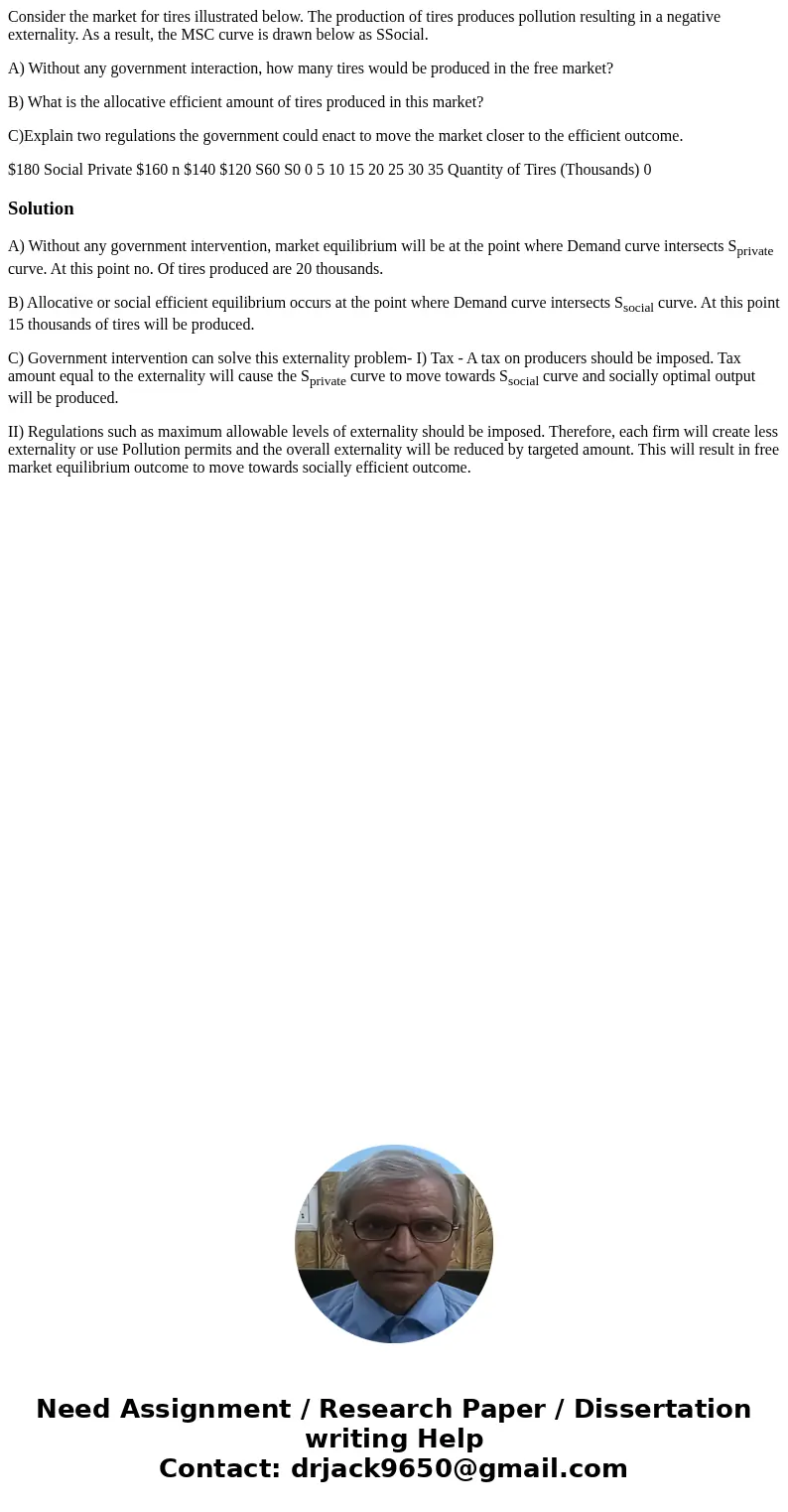Consider the market for tires illustrated below The producti
Consider the market for tires illustrated below. The production of tires produces pollution resulting in a negative externality. As a result, the MSC curve is drawn below as SSocial.
A) Without any government interaction, how many tires would be produced in the free market?
B) What is the allocative efficient amount of tires produced in this market?
C)Explain two regulations the government could enact to move the market closer to the efficient outcome.
$180 Social Private $160 n $140 $120 S60 S0 0 5 10 15 20 25 30 35 Quantity of Tires (Thousands) 0Solution
A) Without any government intervention, market equilibrium will be at the point where Demand curve intersects Sprivate curve. At this point no. Of tires produced are 20 thousands.
B) Allocative or social efficient equilibrium occurs at the point where Demand curve intersects Ssocial curve. At this point 15 thousands of tires will be produced.
C) Government intervention can solve this externality problem- I) Tax - A tax on producers should be imposed. Tax amount equal to the externality will cause the Sprivate curve to move towards Ssocial curve and socially optimal output will be produced.
II) Regulations such as maximum allowable levels of externality should be imposed. Therefore, each firm will create less externality or use Pollution permits and the overall externality will be reduced by targeted amount. This will result in free market equilibrium outcome to move towards socially efficient outcome.

 Homework Sourse
Homework Sourse